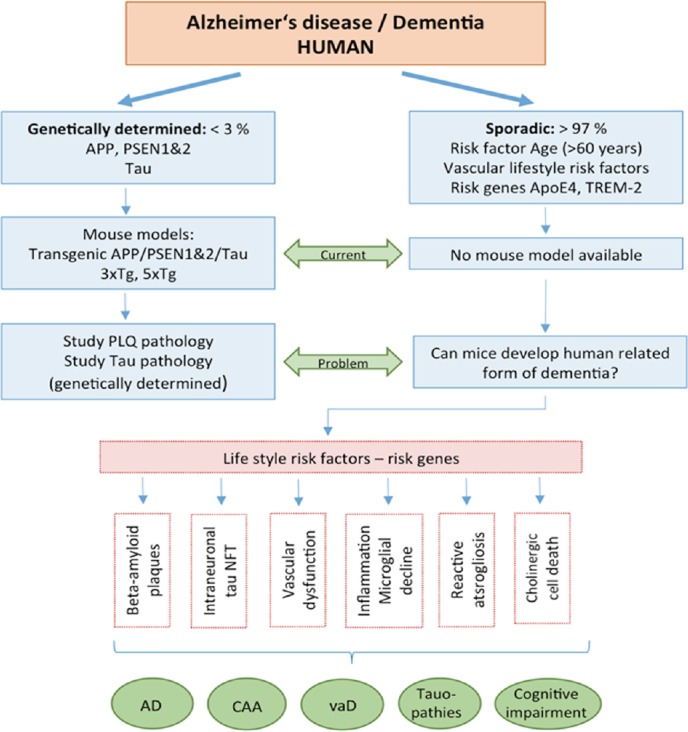Figure 1.

Alzheimer’s disease (AD) is a severe neurodegenerative disorder, characterized by extracellular beta-amyloid plaques (PLQ), intraneuronal tau pathology with formation of neurofibrillary tangles (NFT), vascular dysfunction, inflammation and microglial dysfunction, reactive astrogliosis and cell death of cholinergic neurons.
AD can be distinguished into a genetic (< 3% of patients affected) and sporadic (majority of > 97% of all cases) form of the disease. In genetic AD the major risk genes amyloid precursor protein (APP) and presenilin 1&2 (PSEN1&2) are mutated. Transgenic mouse models with mutations in these genes have been developed and allow to study the progression of beta-amyloid and tau pathologies. Age (> 60 years) is the main risk factor to develop sporadic AD, and two risk factors (Apoliprotein E4 and TREM-2) increase the risk, and many risk factors associated with life style play a role in progression. However, so far, the initial causes for sporadic AD are not known and no mouse model for sporadic AD is available. In addition, also other forms of dementia with cognitive impairment have been reported, showing partial overlap with AD, such as cerebral amyloid angiopathy (CAA), vascular dementia (vaD) or pure tauopathies (such as frontotemporal lobe dementia).
